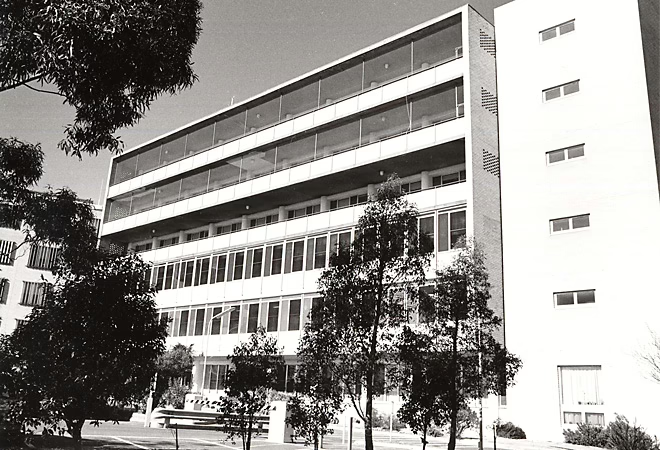A panch is a protective mat that, historically, was used to preserve parts of a ship that are susceptible to wear and damage due to chafing. It’s made by tightly lacing together individual pieces of rope until they form a strong, unified whole. Although this isn’t how Panch Day Surgery Centre got its name, our centre has a lot in common with a panch mat – it’s the result of dedicated individuals banding together to provide high-quality services that preserve the health of local residents. In fact, the site of our day surgery has a 60-year history of this community spirit, which started with the building of a new public hospital.
PANCH gets underway
During World War II, the Preston Council approved the establishment of a hospital – Preston & Northcote Community Hospital (PANCH) – to serve local residents who had previously been forced to travel to the city for medical care. A committee was formed in June 1942 that worked together to secure a 7½-acre former dairy farm on Bell Street for the hospital. The foundation stone was laid on 13 May 1951; however, work stalled between 1952 and 1955 due to a lack of government funding.
During this time, the cause was taken up by the community, with many local Appeal committees and Ladies’ Auxiliaries focusing their efforts on securing donations to fund construction. However, it wasn’t until 1958 that sufficient funding – an estimated total of 2.5 million pounds – was provided to complete the project. What was initially intended to be a 25-bed hospital had 304 beds by the time it was officially opened in 1960 by then Premier Henry Bolte. The hospital provided a wide range of services to the community, including midwifery, pathology, surgery, medical plastic surgery, a children’s ward, dental surgery, casualty ward, outpatients’ clinic, radiology, pharmacy and physiotherapy.

In 1995, a Hospitals Planning Board set up by the Victorian Government determined that individually run hospitals like PANCH should be combined with others into larger health networks. As a result, the hospital was closed in 1998 and the site was sold the following year, with Bell City Centre springing up in its place.
Strong ties with the past
When Vision Hospital Group decided to open a day surgery centre on the site in 2015, we felt it was important to honour the location’s proud history and significance to the local community. So, we decided to retain the name ‘Panch’. ‘The name is familiar and reassuring to locals who fondly remember the hospital,’ says Dr Joe Reich, ophthalmologist and unofficial historian at Vision Eye Institute.
In addition, before the closure of the old hospital, the State Government had built a day surgery connected to the main hospital by a link. The day surgery was never opened – it had barely been completed when the site was sold. ‘When Vision Eye Institute visited the shell of the completed building it was seen as an opportunity to return to the community a facility so recently lost, but in a more modern a purpose-specific form,’ says Dr Reich.
Visitors to our centre will have noticed another tie to the site’s history – a red brick chimney, contrasting with the sleek, modern building. ‘The chimney was used to fire the boilers that provided steam for the original hospital,’ says Dr Reich. ‘It is a landmark easily seen and recognised on the horizon.’
For the long haul
Panch Day Surgery Centre is now a well-established facility that continues to bring together world-class surgeons and state-of-the-art technology to provide specialist care that meets and exceeds patients’ needs. It is the only dedicated ophthalmic day surgery in the inner northern suburbs of Melbourne.
Our centre continues to evolve. Earlier this year we added a new ophthalmology operating theatre, expanding local access to specialist eye care. With the addition of this theatre, we have also welcomed new surgeons and expanded our clinical support team.
We are pleased to continue PANCH’s legacy of providing high-quality healthcare in the northern suburbs and hope to do so for many years to come.


